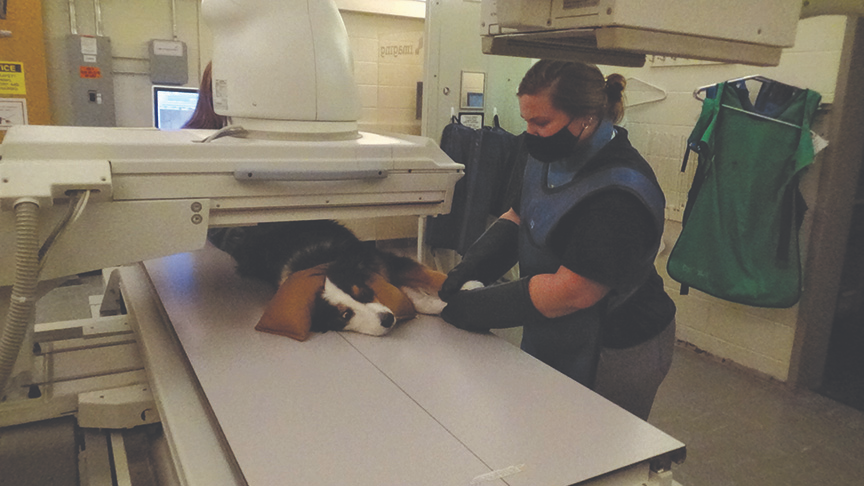When your pet is part of the family, their safety becomes your daily concern. Therefore, when your veterinary doctor suggests fluoroscopy, you may ask yourself: Is it safe for my dog or cat? The answer is yes; veterinary fluoroscopy becomes relatively safe and very effective when administered by experienced veterinarians.
However, as with any medical procedure, certain questions arise. This article will cut down all the basic information that you want to know about fluoroscopy in pets, how this method works, when it can be used, and why it is a safe and helpful method in present-day veterinary practices.
What is Veterinary Fluoroscopy?
Fluoroscopy resembles an X-ray in motion. Unlike a single shot, it creates real-time moving images of your pet’s inner structures. This enables the veterinarian to observe the various actions that occur in your pet’s body as they happen in real time, such as breathing, swallowing, or joint movement. This technology is beneficial in diagnosing conditions that do not present distinctly in still pictures. It presents a more accurate depiction of the problems.
Why Traditional X-rays Sometimes Fall Short
Traditional X-rays are good, but they show limited results. They provide a single snapshot output. However, lots of health issues do not appear in a motion picture. For example:
- A dog with a collapsing trachea often breathes fine at rest but may feel unwell when stressed or active.
- The cat may experience the problem with swallowing only during feeding.
- There might be a normal appearance to joint complaints until movement of the affected limb.
Advanced Imaging Helps in Accurate Diagnosis
With fluoroscopy, veterinarians can identify conditions that are not easily detectable through conventional diagnostic methods. Here are some common areas where it’s making a difference:
Swallowing and Digestive Disorders
Does your dog choke while eating? Does your cat gag when swallowing? Under fluoroscopy, the vets can observe your pet consuming food or liquids in real time as the pet swallows them. This can reveal issues like:
- Esophageal strictures
- Foreign body blockages
- Gastrointestinal motility problems
Airway and Breathing Problems
Fluoroscopy helps visualize the movement of the lungs, trachea, and diaphragm. It’s helpful in diagnosing:
- Tracheal collapse in small dog breeds
- Diaphragmatic hernias
- Abnormal breathing patterns
- Lung disease progression
Joint and Bone Evaluations
Orthopedic issues can sometimes be difficult to spot until a pet experiences problems. The movement of joints is also observed using fluoroscopy, particularly after surgical procedures such as knee repair. It helps assess:
- Joint alignment
- Ligament stability
- Bone healing in fractures
It’s Less Stressful and Safer for Your Pet
Another reason why veterinary fluoroscopy has gained popularity among pet owners is that it is a relatively minimally invasive and usually fast procedure. Most procedures can be carried out with mild general anesthesia or even sedation, depending on the nature of the procedure and the pet’s level of comfort.
Fluoroscopy utilizes X-rays to enable veterinarians to visualize internal structures. The levels of radiation exposure are generally low, particularly when modern digital machines are in use. The veterinary team is also well-equipped with protective gear and will apply shields to ensure that no one is at risk of exposure to the problem.
What Precautions Are Taken During a Fluoroscopy?
Veterinary clinics that offer fluoroscopy adhere to high safety standards to ensure smooth procedure management. These include:
- Well-trained data imaging technicians and veterinarians who are conversant in the safe use of equipment.
- Use protective measures to avoid any harmful exposure during procedures.
- Limited time scanning, or where a few minutes of scanning is performed.
- Optimum sedation (in case required) according to the age, size, and health of your pet.
What Are the Benefits of Fluoroscopy That Make it Worth it?
Safety is essential—but so is the benefit. Here’s why many vets consider fluoroscopy a game-changing tool in diagnostics:
Real-time insight
It allows vets to see exactly how things move inside your pet—something a static image can’t do.
More accurate diagnosis
Some issues only appear when a pet is moving, breathing, or swallowing. Fluoroscopy reveals them in action.
Fewer exploratory procedures
It reduces the need for invasive tests or surgeries to examine the internal organs.
Improved treatment planning
Fluoroscopy often helps vets guide treatment more precisely, leading to better outcomes.
READ MORE : 5 Reasons to Never Skip Your Annual Eye Exam
Final Thoughts
Veterinary fluoroscopy is safe, reliable, and well-proven for modern pet care. When conducted by qualified veterinarians, it would provide an accurate diagnosis. Whenever your vet suggests fluoroscopy, it will provide the insights necessary to recommend the best treatments for your pet. If you’re unsure about any part of the process, don’t hesitate to ask your vet.
If you are looking for a trusted veterinary for cats or dogs, the British Veterinary Centre offers expert care, advanced diagnostics, and a compassionate team dedicated to your pet’s health.
